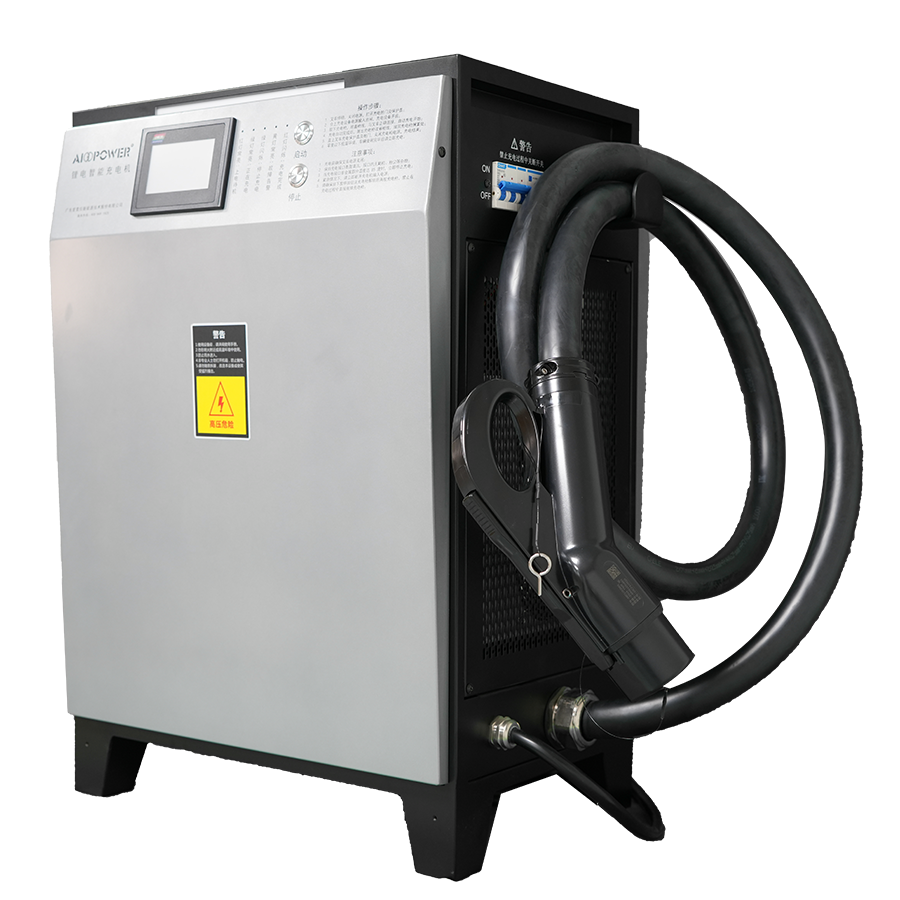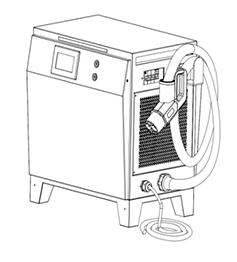PRODUCT VIDEO
INSTRUCTION DRAWING


CHARACTERISTICS & ADVANTAGES
-
PFC+LLC soft switching technology to achieve high input power factor, low current harmonics, small voltage and current ripple, high conversion efficiency up to 94% and high density of module power.
01 -
Wide input voltage range able to provide stable and reliable charging.
02 -
Thanks to CAN communication feature, the EV charger can communicate with lithium battery BMS to do safe and precise charging and ensure longer battery life.
03 -
Ergonomic appearance design and user-friendly UI to show charging information and status, allow different operations and settings.
04 -
Able to diagnose and display charging problems.
05 -
The EV charger is hot-pluggable and modularized in design. This special design can help simplify maintenance and reduce MTTR (Mean Time To Repair).
06 -
UL by NB lab TUV.
07
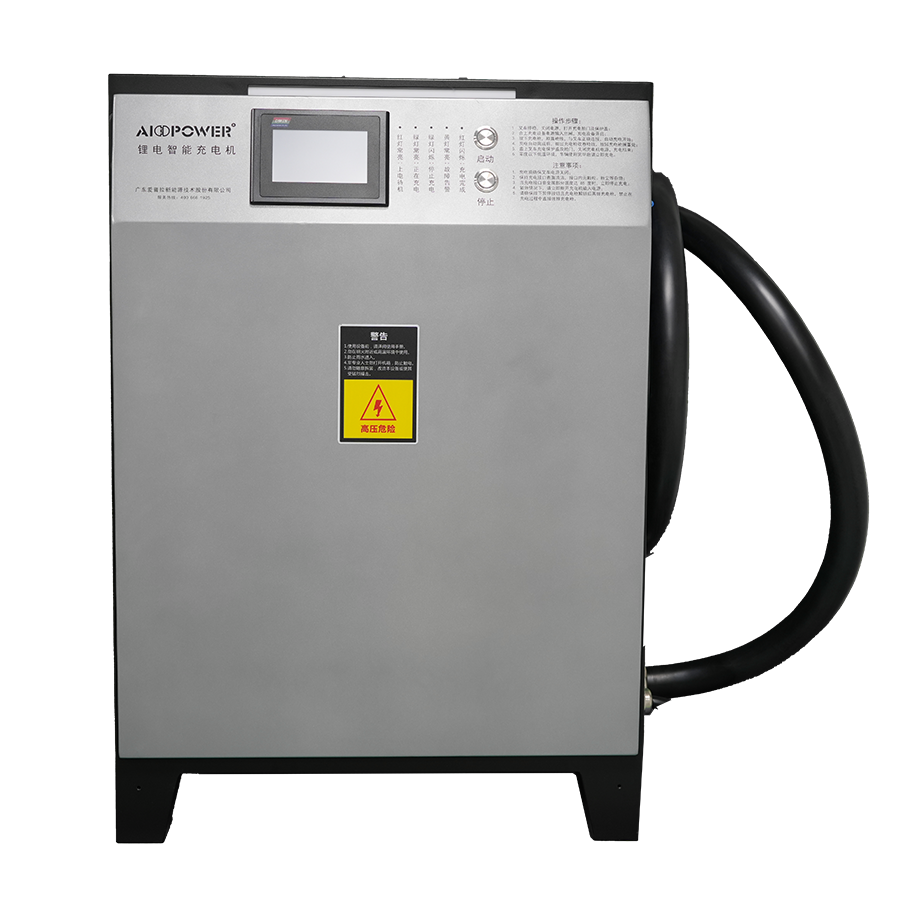
APPLICATION
Construction machinery or industrial vehicles with lithium battery, for example, electric forklift, electric aerial work platform, electric watercraft, electric excavator, electric loader, etc.

SPECIFICATIONS
|
Model |
APSP-80V150A-480UL |
|
DC Output |
|
|
Rated Output Power |
12KW |
|
Rated Output Current |
150A |
|
Output Voltage Range |
30VDC-100VDC |
|
Current Adjustable Range |
5A-150A |
|
Ripple Wave |
≤1% |
|
Stable Voltage Precision |
≤±0.5% |
|
Efficiency |
≥92% |
|
Protection |
Short circuit, Overcurrent, Overvoltage, Reverse Connection |
|
AC Input |
|
|
Rated Input Voltage Degree |
Three-phase four-wire 480VAC |
|
Input Voltage Range |
384VAC~528VAC |
|
Input Current Range |
≤20A |
|
Frequency |
50Hz~60Hz |
|
Power Factor |
≥0.99 |
|
Current distortion |
≤5% |
|
Input Protection |
Overvoltage, Under-voltage, Overcurrent and Phase Loss |
|
Working Environment |
|
|
Working Environment Temperature |
-20%~45℃, working normally; |
|
Storage Temperature |
-40℃ ~75℃ |
|
Relative Humidity |
0~95% |
|
Altitude |
≤2000m full load output; |
|
Product Safety And Reliability |
|
|
Insulation Strength |
IN-OUT: 2200VDC IN-SHELL: 2200VDC OUT-SHELL: 1700VDC |
|
Dimensions And Weight |
|
|
Dimensions |
800(H)×560(W)×430(D)mm |
|
Net Weight |
64.5kg |
|
Protection Class |
IP20 |
|
Others |
|
|
Output Connector |
REMA |
|
Heat Dissipation |
Forced air cooling |
INSTALLATION GUIDE
Dos And Don’Ts In Installation
- Please do place the charger on the horizontal object which is heat-resistant.
- Please make enough room for the EV charger’s cooling. Make sure the distance is more than 300mm between the air inlet and the wall, and the distance is more than 1000mm between the wall and the air outlet.
- To ensure good cooling, make sure the charger works in an environment where the temperature is -20%~45℃.
- Make sure that there are no foreign objects such as fibers, paper pieces or metal fragments inside the charger to prevent fire from happening.
- The ground terminal MUST be well grounded, or electric shock or fire may happen.

OPERATION GUIDE
-
01
Connect the power cable in right way.

-
02
Put the REMA plug into the Lithium battery Pack’s charging port.

-
03
Press the on/off switch to power the charger on.
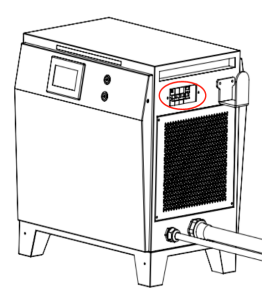
-
04
Push the Start button, charging starts.
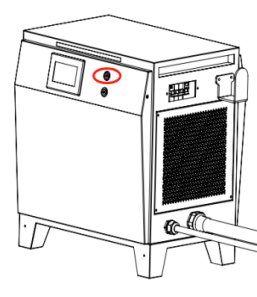
-
05
After the vehicle is 100% charged, push the Stop Button and the charging stops.

-
06
After pushing the Stop Button, you can safely pull out the REMA plug from the charing port, and put the REMA plug back onto the hook.
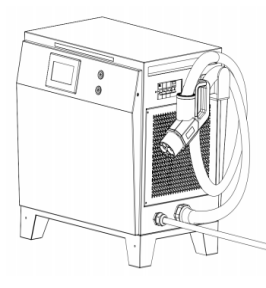
-
07
Press the on/off switch and the charger will be power off.
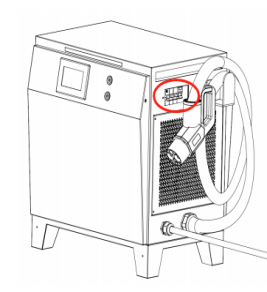
Dos and Don’ts In Operation
- The REMA connector and plug must be free of any wet and the charger inside must be free of any foreign objects such as fibers, paper pieces or metal fragments .
- The charger need enough space for heat dissipation. So obstacles should be more than 0.5M away from the EV charger.
- Every 30 calendar days, to ensure heat dissipation is working well, please clean the air inlet and outlet carefully.
- Users should not disassemble the charger by themselves. The unprofessional disassembly may cause ELECTRIC SHOCK to you and damage to the charger itself which may result in after-sales service not being applicable.

Dos and Don'ts in Using REMA Plug
- The REMA plug must be connected correctly. Make sure that the buckle is well put in the charging port to have good charging.
- The REMA plug should not be used in rough way. Use it in careful and soft way to avoid damage to the plug.
- When the charger is not in use, cap the REMA plug to protect it from foreign things, especially wet that may seriously damages the plug.


